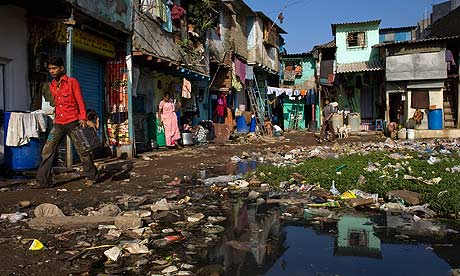|
  
- 积分
- 170192
- 威望
- 46636
- 金钱
- 4
- 阅读权限
- 130
- 在线时间
- 9860 小时

|
5#
 发表于 2009-4-8 00:08
发表于 2009-4-8 00:08
| 只看该作者

来源?
Eminem 发表于 2009-4-7 19:33 
http://www.guardian.co.uk/artanddesign/2009/feb/06/prince-charles-slum-comments
Charles declares Mumbai shanty town model for the world
Robert Booth
The Guardian, Friday 6 February 2009

Dwellers go about their daily routine in the Dharavi slum in Mumbai. Photograph: Daniel Berehulak/Getty Images
The Mumbai shanty town featured in the film Slumdog Millionaire offers a better model than does western architecture for ways to house a booming urban population in the developing world, Prince Charles said yesterday.
Dharavi, a Mumbai slum where 600,000 residents are crammed into 520 acres, contains the attributes for environmentally and socially sustainable settlements for the world's increasingly urban population, he said. The district's use of local materials, its walkable neighbourhoods, and mix of employment and housing add up to "an underlying intuitive grammar of design that is totally absent from the faceless slab blocks that are still being built around the world to 'warehouse' the poor".
The prince's comments are likely to be seen as a criticism of western developers who export plans for large-scale, often high-rise buildings to developing countries. They will also come as a boost for residents of the Mumbai slums who protested against Slumdog Millionaire for characterising them as "dogs" and fought attempts to demolish their homes to make way for skyscrapers.
The prince was addressing a conference at St James's Palace organised by his Foundation for the Built Environment. The charity is attempting to involve local people in the redesign of slum areas in Freetown in Sierra Leone, Kingston in Jamaica and impoverished areas of New Orleans which were hit by Hurricane Katrina.
The prince, who visited Dharavi in 2003, said the adaptation of traditional settlements would deliver "more durable gains than those delivered through the present brutal and insensitive process of globalisation that is shaping so many aspects of how we live".
He warned that a soaring urban population - rising from 50% of all the world's inhabitants today to 70% by 2050 - could only be accommodated without disastrous social and environmental consequences by developing local urban design rather than "a single monoculture of globalisation".
"I strongly believe that the west has much to learn from societies and places which, while sometimes poorer in material terms are infinitely richer in the ways in which they live and organise themselves as communities," he told planners, charity workers and government officials.
"It may be the case that in a few years' time such communities will be perceived as best equipped to face the challenges that confront us because they have a built-in resilience and genuinely durable ways of living."
He shared a platform with Jockin Arputham, founder of the National Slum Dwellers Federation of India, who attacked attempts by foreign investors to clear large parts of Dharavi and replace them with 23-storey apartments. "I am a slum dweller, not a slumdog," he said, in reference to Danny Boyle's film.
"Many developing countries look to the west as a model but that cannot be the model. These [western] buildings use too much power and would not be affordable for us. In India the population has gone beyond all control and it is wrong to expect western development to help us." |
|










